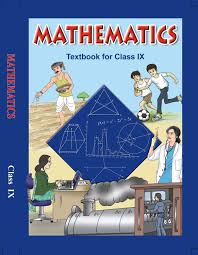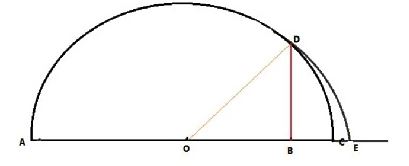Class 9 - Mathematics
Number System - Exercise 1.5

Top Block 1
Question : 1:Classify the following numbers as rational or irrational:
(i) 2 – √5 (ii) (3 + √23) – √23 (iii) 2√7/7√7 (iv) 1/√2 (v) 2π
Answer :
(i) 2 – √5
Since it is a difference of a rational and irrational number,
So, 2 – √5 is an irrational number.
(ii) (3 + √23) – √23 = 3 + √23 – √23 = 3
Which is a rational number.
(iii) 2√7/7√7 = (2 * √7)/(7 * √7) = 2/7
Which is a rational number.
(iv) 1/√2
The quotient of rational and irrational is an irrational number.
So, 1/√2 is an irrational number.
(v) 2π
2π = 2 * π = Product of a rational and an irrational (which is an irrational number)
So, 2π is an irrational number.
Question : 2:Simplify each of the following expressions:
(i) (3 + √3)(2 + √2) (ii) (3 + √3)(3 – √3) (iii) (√5 + √2)2 (iv) (√5 – √2)( √5 + √2)
Answer :
(i) (3 + √3)(2 + √2) = 3(2 + √2) + √3(2 + √2)
= 3 * 2 + 3 * √2 + √3 * 2 + √3 * √2
= 6 + 3√2 + 2√3 + √6
(ii) (3 + √3)(3 – √3) = 3(3 – √3) + √3(3 – √3)
= 3 * 3 – 3 * √3 + √3 * 3 – √3 * √3
= 9 – 3√3 + 3√3 – 3
= 6
(iii) (√5 + √2)2 = (√5 + √2) (√5 + √2)
= √5(√5 + √2) + √2(√5 + √2)
= √5 * √5 + √5 * √2 + √2 * √5 + √2 * √2
= 5 + √10 + √10 + 2
= 7 + 2√10
(iv) (√5 – √2)(√5 + √2) = √5( √5 + √2) – √2(√5 + √2)
= √5 * √5 + √5 * √2 – √2 * √5 – √2 * √2
= 5 + √10 – √10 – 2
= 3
Question : 3:Recall, π is defined as the ratio of the circumference (say c) of a circle to its diameter (say d). That is, π = c/d.
This seems to contradict the fact that π is irrational. How will you resolve this contradiction?
Answer :
When we measure the length of a line with a scale or with any other device, we only get an
approximate rational value, i.e. c and d both are irrational.
⇒ c/d is irrational and hence π is irrational.
Thus, there is no contradiction in saying that π is irrational.
Question : 4:Represent √9.3 on the number line.
Answer :
To represent √9.3 on the number line, draw AB = 9.3 units. Now produce AB to C such that BC
= 1. Draw the perpendicular bisector of AC which intersects AC to O. Taking O as center and
OA as radius, draw a semi-circle which intersects D to the perpendicular at B. Now taking O as
center and OD as radius, draw an arc which intersects AC produced at E.
Hence, OE = √9.3

Mddle block 1
Question : 5:Rationalize the denominators of the following:
(i) 1/√7 (ii) 1/(√7 – √6) (iii) 1/(√5 + √2) (iv) 1/(√7 – 2)
Answer :
(i) 1/√7 = (1/√7) * (√7/√7)
= (1 * √7)/( √7 * √7)
= √7/7
(ii) 1/(√7 – √6) = {1/(√7 – √6) * {((√7 + √6))/( (√7 + √6))}
= (√7 + √6)/{ (√7 – √6) (√7 + √6)}
= (√7 + √6)/{( √7)2 – (√6)2 }
= (√7 + √6)/(7 – 6)
= (√7 + √6)
(iii) 1/(√5 + √2) = {1/(√5 + √2) * {((√5 – √2))/( (√5 – √2))}
= (√5 – √2)/{ (√5 + √2) (√5 – √2)}
= (√5 – √2)/{( √5)2 – (√2)2 }
= (√5 – √2)/(5 – 2)
= (√5 – √2)/3
(iv) 1/(√7 – 2) = {1/(√7 – 2) * {((√7 + 2))/( (√7 + 2))}
= (√7 + 2)/{ (√7 – 2) (√7 + 2)}
= (√7 + 2)/{( √7)2 – 22 }
= (√7 + 2)/(7 – 4)
= (√7 + 2)/3

